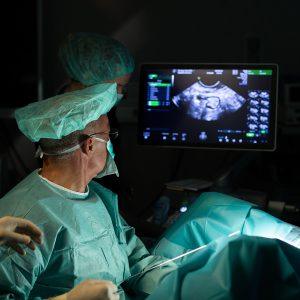The sample of 73 patients with sonograhic follow-ups, and 50 patients who finished one year hormone change monitoring, showed that Segova has a favorable effect on endocrine status and on the reproductive outcome of patients in post menopause.
| Percentage change compared to baseline value (%) | |||
| Hormone | 3 months | 6 months | 12 months |
| FSH | 2.68 % ˃ | 25.82 %˂ | 23.95% ˂ |
| LH | 7.29 % ˂ | 25 % ˂ | 18.58 % ˂ |
| E2 | 26.6 % ˃ | 13.35 % ˂ | 8.54% ˃ |
| PG | 12.5 % ˂ | 56.25% ˂ | 12.5% ˂ |
Our results show that the first effects of the intervention on FSH levels could be seen after 6 months, when FSH starts significant declining (25,8%). (Table 1) The effects of the intervention on LH could be seen already after 3 months, when its concentration starts declining, while a decrease is the most pronounced at six months post intervention (25%).
The rise in estradiol (E2) levels were recorded at 3 months post-intervention (26,6%). The decrease in progesterone levels was recorded at 3 months post-intervention, being the most pronounced at six months (56,2%).
The total results of ultrasonography for 73 patients that completed the one-year follow-up show during 12 months period after the re-transplantation 64% patients had the presence of a follicle. Attempts to perform oocyte retrieval resulted with aspirated oocytes in 39,1% follicle positive women (24,6% out of total number of patients). Fertilization rate of the aspirated oocytes was 83 %, resulting with embryos in 20,54 % of women out of a total number of patients. Embryo transfers were performed in 60 % embryo positive women (12,32% out of a total number of patients), while 66,6% embryo positive women had vitrified embryos (13,69% out of total number of patients had embryos vitrified). Two patients spontaneously conceived after transplantation, while two pregnancies were conceived with IVF (one of them gemelli pregnancy), resulting with 5 newborns.






